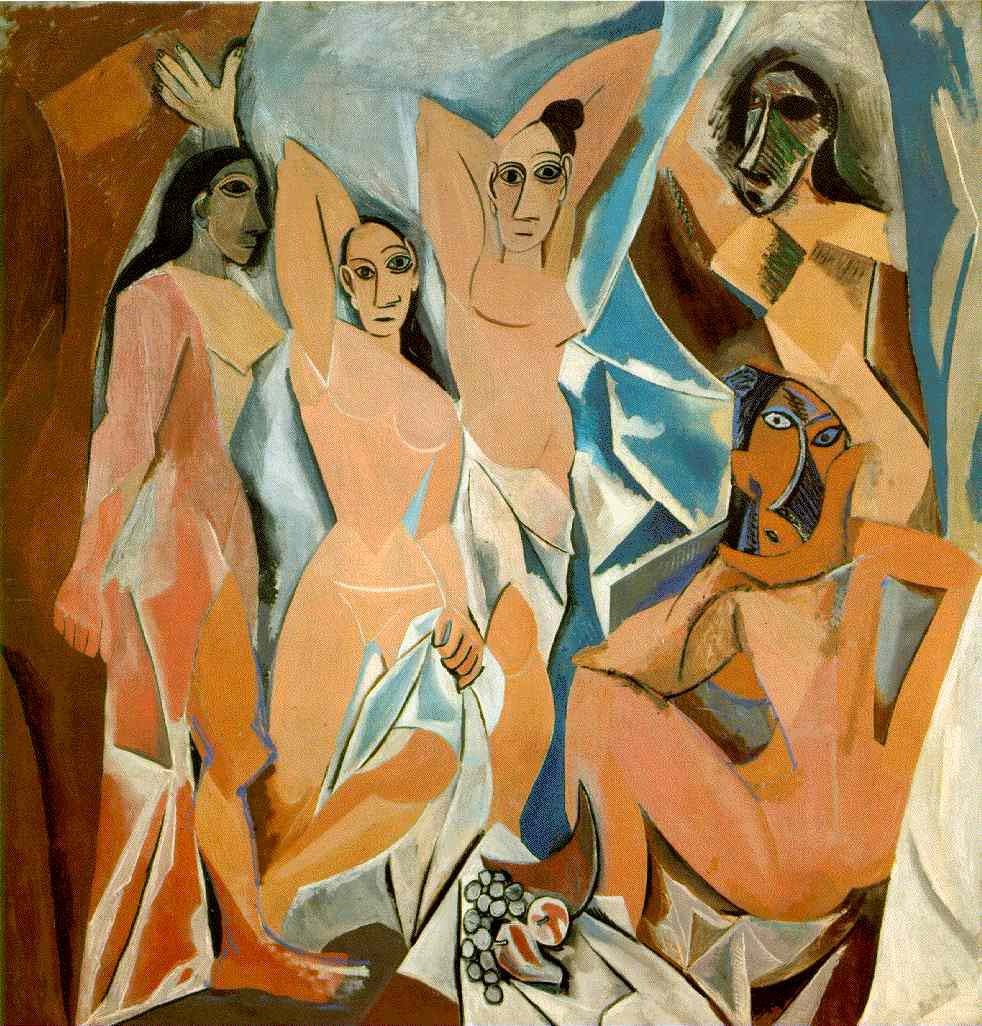In
my academic endeavor to discover the exact nature of Primitive influence on Picasso I came across a 1968 LIFE article titled, The Adventure of Cubism Began with a Shocker, by Tom Prideaux. I
was interested to understand the popular perception of Picasso and his
influence on cubism in hopes of finding the roots of his primitive influence.
The article was extensive and intriguing. Overall, it was exploring Picasso and
his influence on cubism, focusing on Demoiselles D'Avignon, more specifically the squatting female
figure in the painting, as the start to the Cubist movement (53). This is a
commonly held belief I have come across in several classes and readings. But it
was one fact in the article that caught my attention from the beginning, the small bit of information that Picasso had
visited a Cezanne exhibition shortly before starting Demoiselles D'Avignon and was particularly impressed by Cezanne’s Bathers (51). Apparently, Picasso looked
to Cezanne’s work extensively to create this style called “cubism”. It was
also noted in the article that Picasso was unable to pin point a specific
instance where he was exposed to and influenced by primitive art (52).
The article, Biography becomes
form: William Rubin, Pablo Picasso, and the subject of art history, argues the
main point of the LIFE article, pointing out that the famed art historian,
William Rubin, believed that the beginning of cubism began with Cezanne, not
Picasso (128). Rubin also denounces the idea that Picasso’s experience at
Trocadero, or Primitivism as a whole, directly influenced Picasso or the course
of modern art. Rubin said, “As we shall see, the changes in modern art were already underway when
vanguard artists first became aware of tribal art. In fact, they became
interested in and began to collect Primitive objects only because their own
explorations had suddenly made such objects relevant to their work. At the
outset, then, the interest in tribal sculpture constituted an elective affinity”
(131). He believes the intersection between primitive art and modern artists
was coincidental, not casual. Picasso confirms this notion in his statement,
“The African sculptures that hang around ... my studios are more witnesses than
models”(131).
Rubin nor Picasso
himself admit to a direct Primitive influence in his art. The fact that other Modern artists such as Matisse, Derain,
and Vlaminck discovered African
art prior to Picasso in conjunction with the knowledge of Cezanne’s immense influence on Picasso, leads me to believe that Primitive art did not cause Picasso’s work to be as they are, instead
he was influenced by the contemporary trend (131). The Primitive did influence
Picasso’s work but this article notes that it was a side effect, not an intentional representation of the Primitive or primitive art. Had Picasso not been exposed to the tribal art at Trocadero or his friends esteemed collections, his art would have followed a similar path (yet not exactly the same of course). I believe he gained more influence from other artists such as Cezanne, Matisse, Derain, and Vlaminck than the tribal masks in his office. Therefore, yes, Picasso was influenced by the Primitive, however, he did not seek out to actively incorporate the ideas of primitive artwork into pieces. He had a vision prior to his exposure to Oceanic and African art, it just so happens that the fundamental ideas of primal art coincided with his personal innovative vision.
Tom, Prideaux. "The Adventures of Cubism Began with a Shocker." LIFE. 27 1968: 49-62. Web. 18 Oct. 2012. <http://books.google.com/books?id=rlIEAAAAMBAJ&pg=PA52&lpg=PA52&dq=when was picasso exposed to primitive&source=bl&ots=SboqMAiG3O&sig=r5g8kgmSXPS8RRVHX2ZBnBxryAA&hl=en&sa=X&ei=g35_UMa-B6e7iwKl8YCgCA&ved=0CEMQ6AEwBQ>.
D'Souza, Aruna. "Word & Image: A Journal of Verbal/Visual Enquiry." Word & Image: A Journal of Verbal/Visual Enquiry. 18.3 (2002): 126-136. Web. 18 Oct. 2012. <http://www.tandfonline.com/doi/pdf/10.1080/02666286.2002.10404983>.
 Mallen references Les Desmoiselles d’Avignon throughout the introduction as an
example of his primitive technique.
Mallen references Les Desmoiselles d’Avignon throughout the introduction as an
example of his primitive technique.